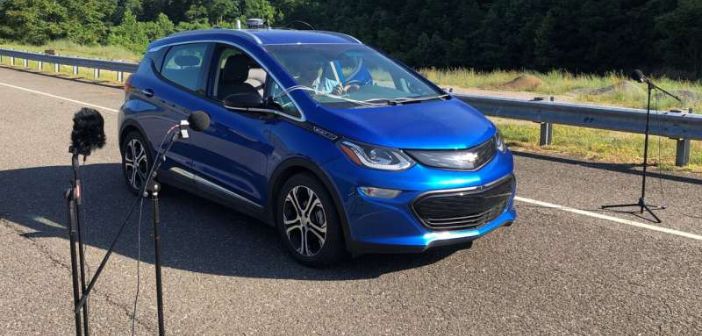While they decrease sound pollution, electric vehicles are so quiet they can create a safety concern, particularly to the visually impaired. To address this, many governments have mandated artificial sounds be added to electric vehicles.
In the United States, regulations require vehicle sounds to be detectable at certain distances for various vehicle speeds, with faster speeds corresponding to larger detection distances. Michael Roan, from Penn State University, and Luke Neurauter, from the Virginia Tech Transportation Institute, and their team tested how well people detect electric vehicle sounds in terms of these requirements.
Roan shared their methods and results in a talk, “Electric Vehicle Additive Sounds: Detection results from an outdoor test for sixteen participants,” on 30 November.
Participants in the study were seated adjacent to a lane of the Virginia Tech Transportation Institute’s Smart Road facility and pressed a button upon hearing an approaching electric vehicle. This allowed the researchers to measure the probability of detection versus distance from the vehicle, a new criterion for evaluating safety compared to the mean detection distance.
“All of the cases had mean detection ranges that exceeded the National Highway Transportation Safety Administration minimum detection distances. However, there were cases where probability of detection, even at close ranges, never reached 100%,” said Roan. “While the additive sounds greatly improve detection distances over the no sound condition, there are cases where pedestrians still missed detections.”
Even after adding sound, electric vehicles are typically quieter than standard internal combustion engine vehicles. In urban environments, they would create less sound pollution.
Roan said further studies need to be done to investigate detection when all vehicles at an intersection are electric. Additive sounds could create a complex interference pattern that may result in some loud locations and other locations with very little sound.





